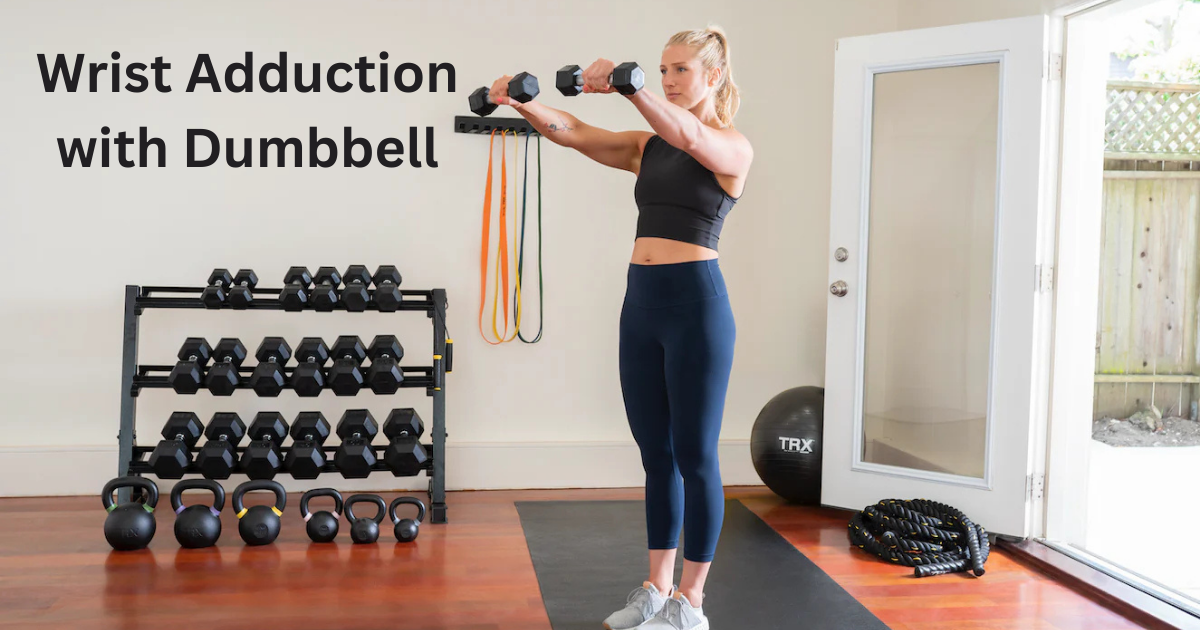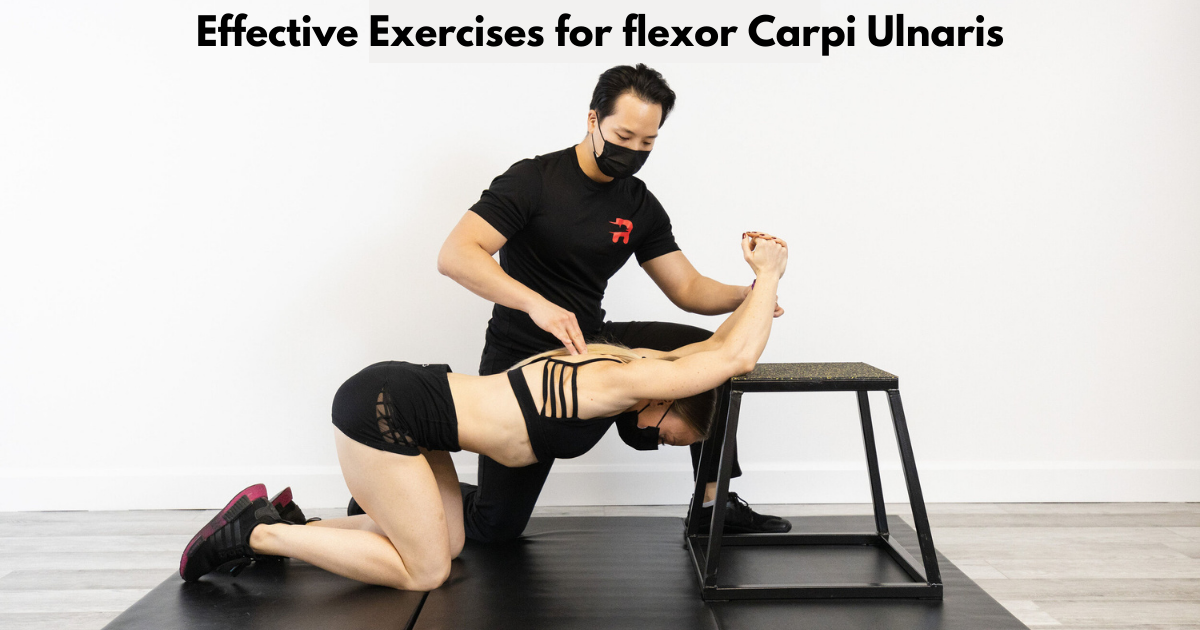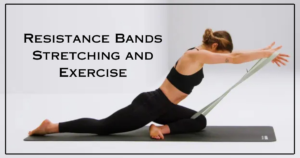The flexor carpi ulnaris (FCU) is a forearm muscle situated internally between the elbow and wrist point. Through wrist flexion and adduction movements, this muscle enables wrist bending while moving to the centre of the body. The flexor carpi ulnaris muscle manages wrist mobilization and strength, stability, and injury resistance, thus enhancing grip power in people who need these functions, including athletes and repetition handlers.
This article evaluates Exercises for flexor Carpi Ulnaris strength while explaining its role in wrist functions. It is followed by rehabilitation exercises built for those recovering from forearm or wrist injuries or weakness.
Understanding the Exercises for Flexor Carpi Ulnaris
This muscle functions as one of the key wrist flexors, enabling movement while also performing wrist adduction functions. The Exercises for flexor Carpi Ulnaris begin at the medial epicondyle of the humerus, which is the inside part of the elbow before it inserts near the pisiform bone, the hook of the hamate, and fifth metacarpal bone on the pinky side of the hand.
Through joint operations with other forearm muscles, this muscle stabilizes the wrist while enabling crucial movements regarding hand grabbing and lifting functions and performing delicate tasks such as handwriting and keyboard typing. The FCU becomes less efficient when it is weak or imbalanced, thus leading people to lose their grip strength and experience wrist instability, which creates an additional risk of developing overuse injuries such as tendinitis and carpal tunnel syndrome .
.
Why Exercises for flexor Carpi Ulnaris is Important
More vigorous Exercises for flexor Carpi Ulnaris will produce these benefits:
01.Improved wrist function: Enhanced wrist performance emerges from superior wrist control, which helps people execute lifting operations, as well as carrying and writing tasks.
02.Injury prevention: FCU weakness causes overuse conditions, including wrist sprains and tendinitis, which leads to injuries. FCU strengthening reduces the risk of developing such problems.
03.Enhanced grip strength: Higher grip strength becomes possible when one strengthens the wrist-flexing FCU.
04.Better posture: Strong postural control develops from muscular strength improvements in the forearm because they enhance elbow and shoulder support, which minimizes upper limb stress.
This discussion will investigate tried and tested exercises for building up and healing the flexor carpi ulnaris.
2. Wrist Flexion with Dumbbell
Exercises for flexor Carpi Ulnaris provide a straightforward approach to building strength in flexor carpi ulnaris muscles. Performing this exercise with the correct form enables you to activate the FCU and nearby wrist flexor muscles.
How to do it:
.You should sit on a bench or chair with your forearm on top of your thigh. Cross your thumb over your forearm as you position your palm upward supine while holding a small dumbbell.
- Rest your wrist at the edge of your thigh, maintaining a flat forearm positioning.
- Direct the dumbbell toward your body while flexing your wrist. Perform the weightlifting action using your forearm muscles, particularly your flexor carpi ulnaris.
- Use a controlled motion to move the dumbbell down while your wrist achieves full extension.
- The routine includes 2-3 repetitions of 10-15 reps for each wrist.
Tips:
- You should begin with a lightweight to prevent wrist strain.
- Control the dumbbell movement slowly during exercise to optimally activate the flexor carpi ulnaris muscles.
Wrist Flexion with Resistance Band
The resistance band allows a flexible resistance that changes during each motion stage in this variation. This exercise strengthens and endures the flexor carpi ulnaris by acting as a suitable training routine.
How to do it:
- Tie it off at a lower point, such as a door or a heavyweight, with a resistance band.
- Seat yourself comfortably using your forearm to support your thigh with your palm directed upward.
- Secure the resistance band in your hand while maintaining the tension force that comes from holding your wrist in a neutral position.
- Perform slow wrist movements by directing the hand toward your body from an extended position and then moving back to the start position.
- Perform two to three sets of 10 to 15 wrist curls for both hands.
Tips:
- A middle-tension resistance band should be selected to prevent wrist injuries.
- Concentrate on controlled movements, particularly when returning to the starting position, to develop sufficient time under tension for the muscles.
Reverse Wrist Curls
The reverse wrist curl exercise strengthens extensor forearm muscles and develops the flexor carpi ulnaris by simultaneously working with their opposing counterparts. People need equal strength development between their flexor and extensor muscles to achieve stable and strong forearms.
How to do it:
- Position yourself on a bench with your forearm across your thigh while your palm should lead downward.
- Hold a small dumbbell or barbell in your hand and extend it while your wrist drops beyond the edge of your thigh.
- Lift the weight by moving your hand from the back of your wrist.
- Regulate the weight descent through a controlled movement.
- During the exercise, do 2 to 3 sets of 10 to 15 repetitions per arm.
Tips:
- The exercise begins with a minimal weight because proper form is essential.
- Slowly control your weight by maintaining it throughout every step of the exercise.
Wrist Adduction with Dumbbell
The Exercises for flexor Carpi Ulnaris receive specific attention through this movement while the wrist adducts toward the body. The muscle needs this type of exercise specifically to enhance its ability to maintain wrist stability.
How to do it:
- Set on a bench, with your forearm placed on your thigh beneath the wrist as it extends beyond the edge, while the palm remains facing inward.
- You should grip a lightweight dumbbell while performing this exercise.
- The dumbbell approaches the body as you activate your forearm muscles to move your wrist. Maintain the peak position for one second during the contraction.
- Perform the movement ending at the original position and initiate another repetition.
- Execute two to three workout sets with ten to fifteen arm repetitions per set for each limb.
Tips:
- Slower controlled movements will help activate the flexor carpi ulnaris during the exercise.
- Your exercise weight should be kept light until you build enough strength to handle greater weight
 .
.
2. Wrist Roller Exercise
The wrist roller equipment bundles the opportunity to train flexor and extensor forearm muscles. Using the wrist roller tool provides excellent results in strengthening both total forearm muscles and flexor carpi ulnaris and building proper grip power.
How to do it:
- Stand before you as you hold a wrist roller, which includes a weighted rod attached to a roped handle through both hand grips.
- Start the exercise by winding the rope with small inward circles on your wrists. During your continued rotation motion, the weight on the roller starts to rise above the floor.
- Move the wrist roller from a ground position toward the weight until it reaches the top point before returning to the floor through unrolling.
- Perform this exercise multiple times through 2-3 defined sets where you should roll the rope for 5-10 repetitions in each repetition group.
Tips:
- The wrist will function better when using weights that are not excessively heavy.
- Your goal should be achieving a constant speed with graceful movements.
Forearm Stretching and Flexor Release
The correct practice of stretching together with forearm muscle release serves two essential purposes: enhancing flexibility and preventing tension from stiffness and tightness. Extending your flexor carpi ulnaris muscles results in discomfort and weakness, so stretching these muscles through proper exercises should be a regular activity.
How to do it:
- Keeping your arm extended directly in front of your body, position your palm for upward exposure.
- The other hand should perform a gentle backward motion, stretching not only the fingers but also extending the wrist to lengthen the forearm flexors.
- Perform each stretch for 20-30 seconds while doing it 2-3 times repeatedly between each arm.
Tips:
- Gradual movement is safe for stretching since forcing overly stretched positions should be avoided.
- Wrist flexibility can be improved through slow wrist rotations.

Conclusion
Because the Exercises for flexor Carpi Ulnaris control wrist motion, proper strength training is required to prevent injuries, improve wrist steadiness, and boost overall forearm quality. Exercises involving wrist flexions, reverse wrist curls, wrist adduction, and wrist rollers enable people to strengthen their flexor carpi ulnaris while enhancing their function, flexibility, and overall movement capabilities.
Those who need wrist recovery time should also consider forearm stretching exercises and light resistance movements to regain mobility while avoiding further damage. Exercises for flexor Carpi Ulnaris, along with reducing risks of injury and improving wrist overall function, make them a crucial element in complete training programs.

 .
.




